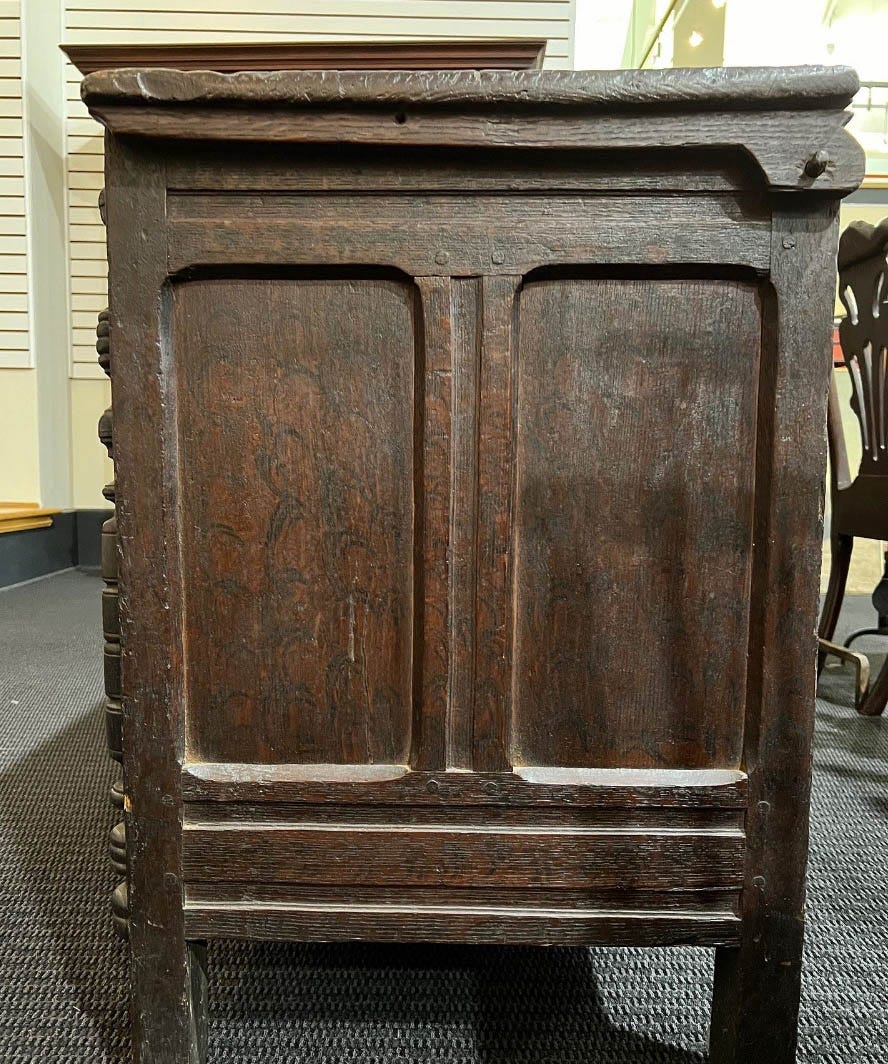In the last post, I showed the mitered and beveled mortise & tenon work framing panels in 17th-century joined work. This post shows some more typical treatments on New England furniture - I’ll start with the basics. The end framing of this chest is probably the most common approach - tenon shoulders cut at 90-degrees, meeting squared edges to the mortised members. In this case, there’s a molding cut in the midst of some framing parts’ surfaces/faces - this is probably what is called a “crease” molding in the period. Not the profile, but the placement of the molding.
Another way to treat that panel “surround” is to bevel all the framing members around the panel, but fair-out the bevel as it approaches the mortised bits. This is found from time to time - I just got some photos of it on a chest at this month’s auction at Pook & Pook:
Keep reading with a 7-day free trial
Subscribe to Follansbee's Substack to keep reading this post and get 7 days of free access to the full post archives.





